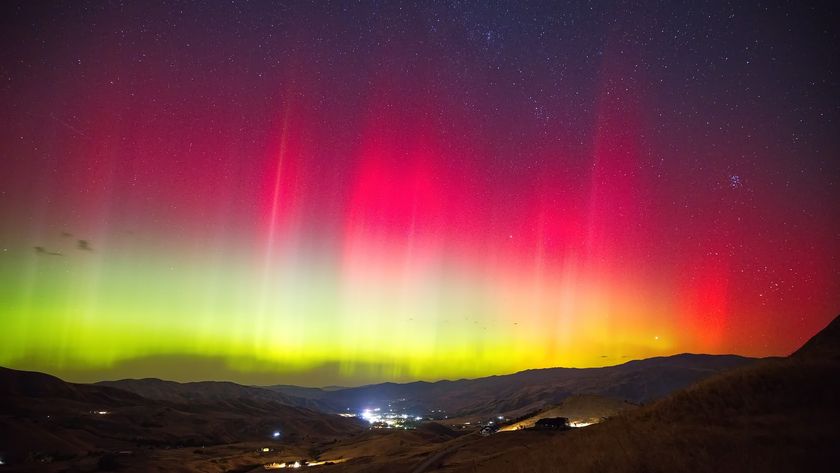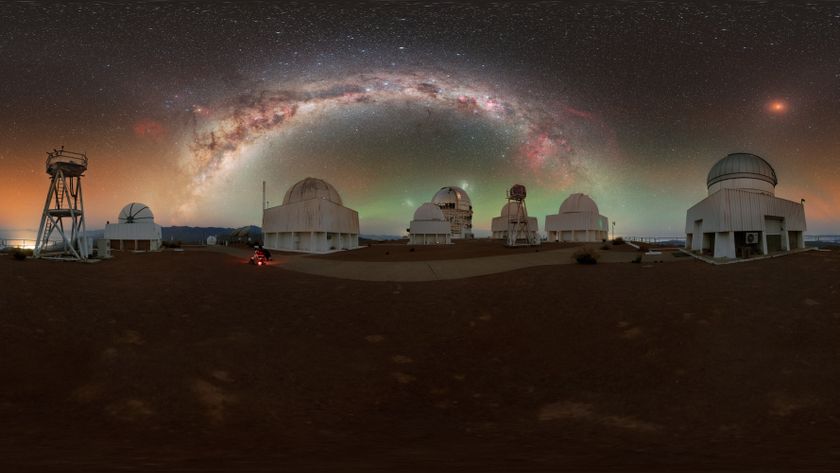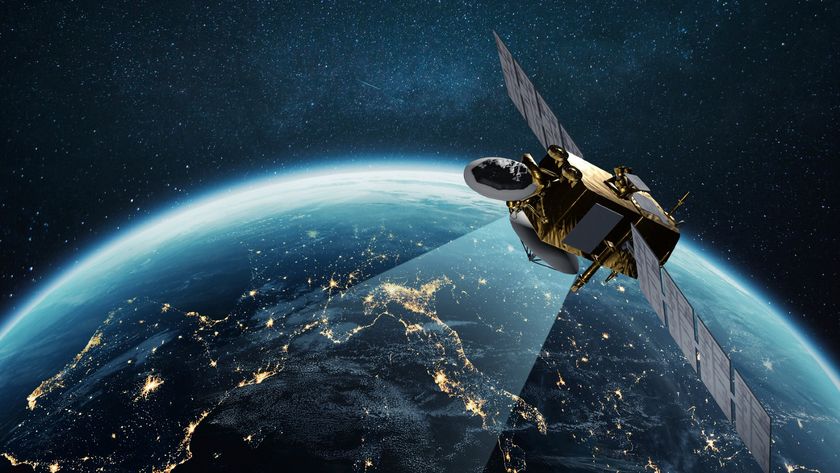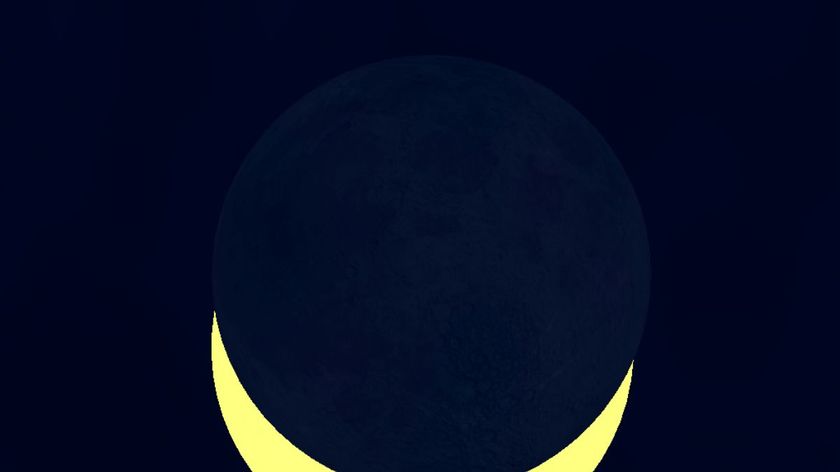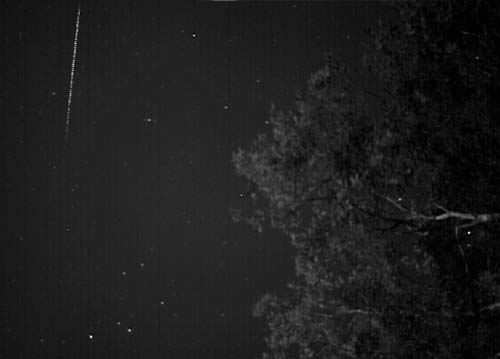
This story was updated at 6:10 p.m. EDT.
A surprise meteor shower spotted in February was likely caused by cosmic "bread crumbs" dropped by an undiscovered comet that could potentially pose a threat to Earth, astronomers announced today (July 27).
The tiny meteoroids that streaked through Earth's atmosphere for a few hours on Feb. 4 represent a previously unknown meteor shower, researchers said. The "shooting stars" arrived from the direction of the star Eta Draconis, so the shower is called the February Eta Draconids, or FEDs for short.
The bits of debris appear to have been shed by a long-period comet. Long-period comets whiz by the sun very infrequently, so it's tough to predict when they last cruised through our neck of the woods — and when they'll come back, researchers said.
That uncertainty is cause for some concern in this case, they added. [Close Encounters of the Comet Kind]
"If the meteoroids can hit us, so can the comet," said FEDs discoverer Peter Jenniskens, of the SETI (Search for Extraterrestrial Intelligence) Institute and NASA's Ames Research Center. "We don’t know whether the comet has already passed us by or is still on approach."
Still, Jenniskens stressed that the chances of such a collision are extremely remote.
Get the Space.com Newsletter
Breaking space news, the latest updates on rocket launches, skywatching events and more!
Scanning the night sky
Jenniskens heads the Cameras for Allsky Meteor Surveillance (CAMS) project, which has been monitoring the San Francisco Bay Area's night skies with low-light video cameras in an effort to map meteor showers.
CAMS cameras picked up the FEDs, bringing the tally of officially recognized meteor showers to 64.
The comet that produced the meteor shower is unknown. It may have last zipped by the sun just a few hundred years ago, or many thousands, researchers said. But it apparently came relatively close to Earth on its last trip through the inner solar system. [Comet Dive-Bombs Sun During Big Solar Eruption]
At that time, the comet released a cloud of dust, which is now making its own way around the sun.
"Earth gets hosed typically only once or twice every 60 years by such streams," Jenniskens said. "The stream of dust is always there, but quite invisible just outside of Earth’s orbit. Only when the planets steer the dust in Earth’s path do we get to know it is there."
Learning more about the comet
Jenniskens teamed up with a colleague, Finnish astronomer Esko Lyytinen, to investigate when the FEDs might have another encounter with Earth. Lyytinen calculated a possible return in 2016 or 2023, and after that not again until 2076, researchers said.
Whenever the FEDs show up again, astronomers will study them closely. Future observations of the shower may reveal key information about its parent comet — including whether or not it poses a real danger of ever slamming into Earth.
However, it can be tough to gauge a comet's path based on how its sloughed-off pieces are moving around the solar system.
"The bits from the comet are not subjected to the same forces that the comet is," said Bill Cooke, head of the Meteoroid Environment Office at NASA's Marshall Space Flight Center in Huntsville, Ala.
Dusty comet debris is affected primarily by things like radiation pressure and gravity, explained Cooke, who was not part of the FEDs discovery team. But comets' orbits are more of a wild card, since the icy wanderers tend to spawn gaseous jets as they approach the sun and begin heating up. These jets can have a big impact on comet trajectories.
"That's why tracking a comet can be quite a tricky business," Cooke told SPACE.com.
Don't worry too much
Despite the uncertainty, Cooke said the public shouldn't get into a panic about a potential "doomsday comet."
"Does this shower indicate that a comet's going to whack Earth? I kind of doubt it," he said. "I don't think you can infer from this meteor stream that the parent comet is in a potentially hazardous orbit."
Jenniskens as well urged some perspective, drawing on history as a guide.
"Chances are very small that the comet will actually hit us, as such impacts are rare in Earth’s history," he said.
You can follow SPACE.com senior writer Mike Wall on Twitter: @michaeldwall. Follow SPACE.com for the latest in space science and exploration news on Twitter @Spacedotcomand on Facebook.
Join our Space Forums to keep talking space on the latest missions, night sky and more! And if you have a news tip, correction or comment, let us know at: community@space.com.

Michael Wall is a Senior Space Writer with Space.com and joined the team in 2010. He primarily covers exoplanets, spaceflight and military space, but has been known to dabble in the space art beat. His book about the search for alien life, "Out There," was published on Nov. 13, 2018. Before becoming a science writer, Michael worked as a herpetologist and wildlife biologist. He has a Ph.D. in evolutionary biology from the University of Sydney, Australia, a bachelor's degree from the University of Arizona, and a graduate certificate in science writing from the University of California, Santa Cruz. To find out what his latest project is, you can follow Michael on Twitter.






